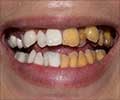
The objective of this study was to determine if fuz expression was critical for craniofacial and tooth development. In this study, fuz-/- mutant mice and mouse embryo fibroblasts were used to analyze the effect of fuz expression on tooth development and gene expression pathways, respectively. Immunohistochemical, molecular and biochemical assays were used to understand the defects and molecular mechanisms underlying the phenotype of the Fuz-/- mice.
The Fuz-/- mutant mice exhibited massive craniofacial deformities such as a hypoplastic mandible, a complete lack of upper and lower incisor development, malformed molars, hyperplastic Meckel's cartilage and missing eyes and tongue. Fuz has an essential role in ciliogenesis, and the primary cilium has been shown to repress canonical Wnt signaling. The results of the data collected suggests that Fuz is involved in a negative feedback loop of canonical Wnt signalling regulation, and this feedback loop is essential for precise regulation of craniofacial development. Support for this research was provided from grant DE13941 from the National Institute of Dental and Craniofacial Research.
Source-Eurekalert










